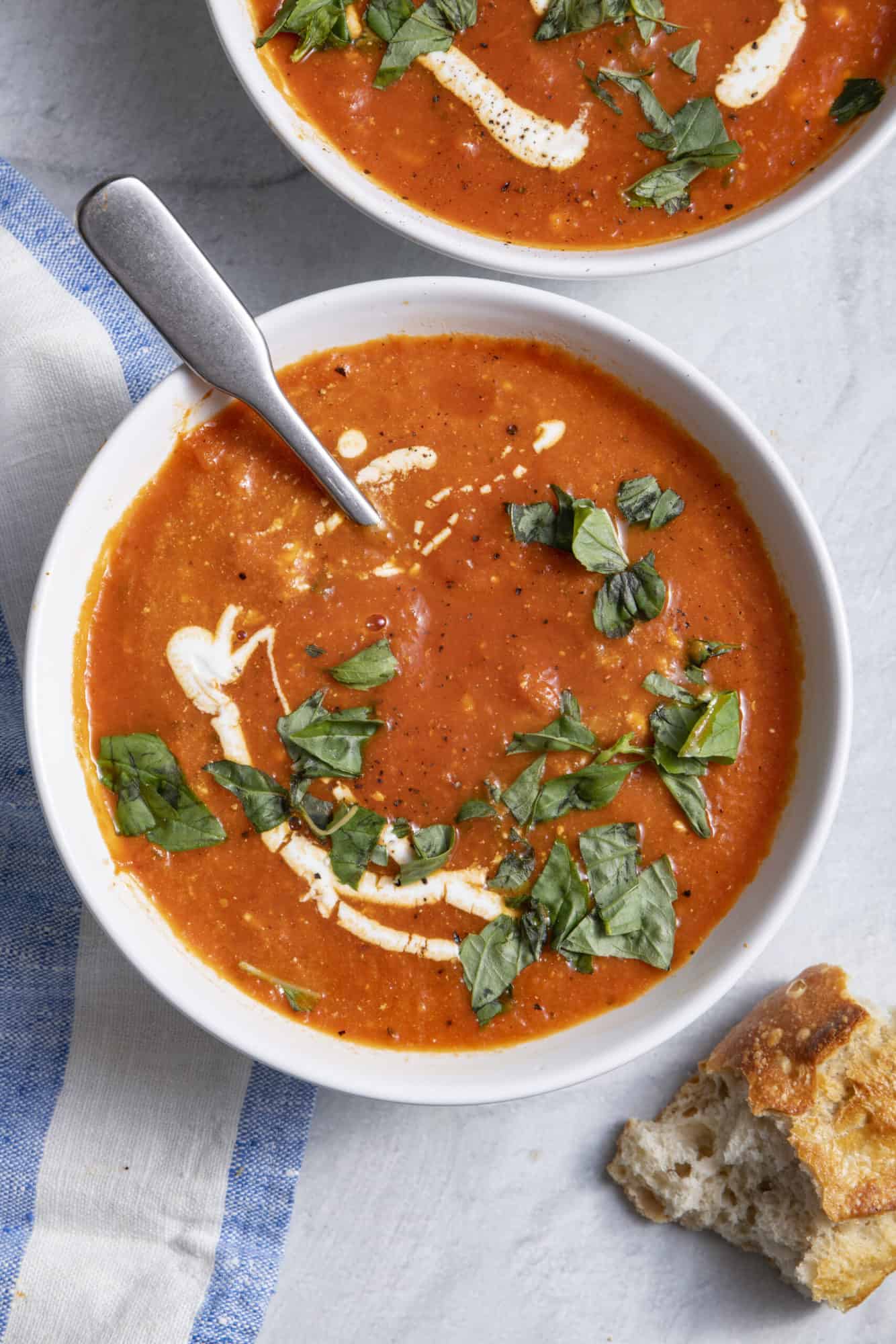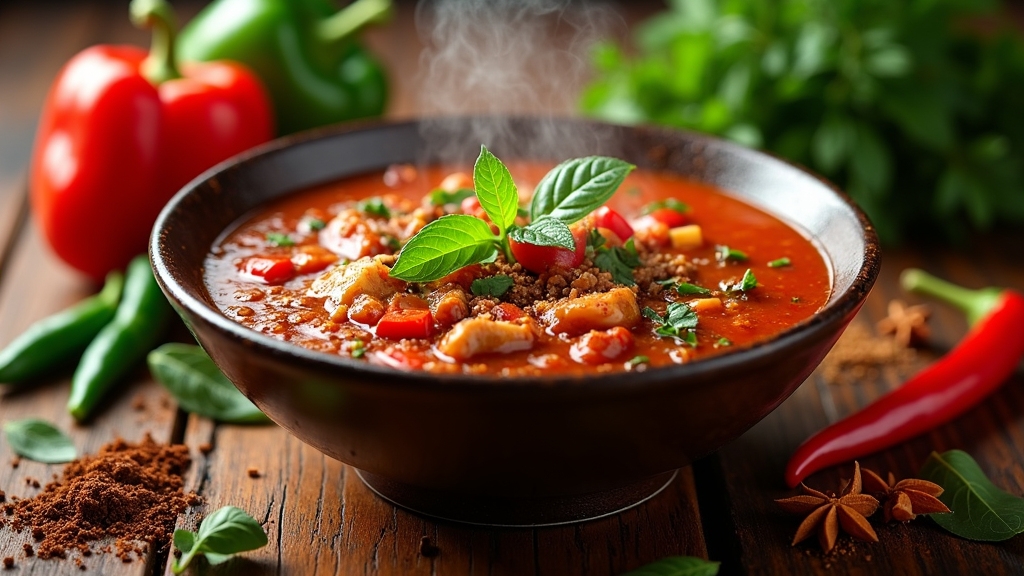If you’re looking to bring the warmth of West African cuisine to your kitchen, try my pepper soup recipe! It’s a fragrant blend of meats, fish, or vegetables simmered with aromatic spices, perfect for chilly nights or when you’re feeling under the weather. I love pairing it with crispy fried plantains or rice for a hearty experience. The unique flavors and spices tell a story of heritage and communal joy. Curious to learn more about its history and variations?
History
When I think about the history of pepper soup, I’m reminded of its deep roots in West African culture, where it’s more than just a dish—it’s a comforting tradition. This soup carries immense cultural significance, often served during gatherings, celebrations, and even during times of healing. Each region boasts its own unique variations, influenced by local ingredients and cooking methods. For instance, while some versions use fish, others incorporate meats or even snails, showcasing the diverse culinary landscape of the continent. The spices used not only tantalize the taste buds but also reflect the rich history of trade and exchange. Pepper soup isn’t just nourishment; it’s a connection to heritage, embodying the stories and traditions that shape our identities.
Recipe
Pepper soup is a fragrant and spicy dish that hails from West Africa, particularly popular in Nigeria. This comforting soup is traditionally made with a variety of meats, fish, or vegetables, infused with aromatic spices that create a delightful warmth. Perfect for chilly evenings or as a remedy for colds, pepper soup is both satisfying and nourishing, often served as an appetizer or a main course.
The beauty of pepper soup lies in its versatility; you can adjust the ingredients based on your preferences and dietary restrictions. Whether you choose to use chicken, goat, or fish, the essence of the dish remains the same—bold flavors and a satisfying heat that warms the soul. Serve it hot, accompanied by rice or plantains for a complete meal that will delight your family and guests alike.
Ingredients:
- 2 pounds of chicken (or your choice of meat)
- 6 cups of water
- 1 medium onion, chopped
- 2 tablespoons of ground crayfish
- 2 tablespoons of pepper soup spice mix
- 1 tablespoon of ground pepper (to taste)
- 3-4 cloves of garlic, minced
- 2-3 tablespoons of chopped fresh parsley or scent leaves
- Salt to taste
To prepare the pepper soup, begin by washing the chicken thoroughly and placing it in a large pot with the water. Add the chopped onion, minced garlic, and a pinch of salt. Bring the mixture to a boil, then reduce the heat and allow it to simmer for about 30 minutes. Next, incorporate the ground crayfish, pepper soup spice mix, and ground pepper into the pot. Stir well and let it simmer for another 10-15 minutes until the chicken is fully cooked and tender. Finally, add the chopped parsley or scent leaves before serving hot.
When cooking pepper soup, feel free to customize the spice level according to your palate. For a richer flavor, consider marinating the chicken with the spices a few hours before cooking. Additionally, you can experiment with different meats or add vegetables such as yam or potatoes for a heartier version. Always taste and adjust the seasoning as needed before serving to guarantee the perfect flavor balance. Enjoy your delicious homemade pepper soup!
Cooking Steps
To start making my delicious pepper soup, I always gather the freshest ingredients first. The right spices and seasonings really bring the flavors to life, so I pay close attention to that step. Once everything’s ready, I let it simmer for about 30 minutes, filling my kitchen with an irresistible aroma.
Step 1. Gather Fresh Ingredients
Gathering fresh ingredients is an essential step in making a delicious pepper soup that truly shines. I love visiting local markets where vibrant colors and rich aromas beckon me. It’s here that I source the freshest herbs, like thyme and basil, which elevate the soup’s flavor profile. The excitement of choosing ripe tomatoes, fragrant peppers, and tender meat creates an experience that’s more than just shopping—it’s a connection to the dish I’m about to create. I often chat with local farmers, learning about their growing practices and discovering unique varieties that I can incorporate. The freshness I find at these markets transforms my pepper soup into a culinary masterpiece, bursting with flavor and innovation.
Step 2. Add Spices and Seasonings
As I prepare to elevate my pepper soup, I know the right spices and seasonings are essential for bringing out its full potential. I start by blending innovative spice combinations like crushed ginger, garlic, and a hint of nutmeg. These aromatic ingredients create an enchanting base. Next, I sprinkle in some freshly ground black pepper and a touch of thyme, allowing their bold flavors to dance together. I also love experimenting with seasoning techniques—like toasting spices briefly in a dry pan to release their oils, enhancing their fragrance. Finally, a dash of salt ties everything together, ensuring each spoonful bursts with flavor. This meticulous layering transforms my pepper soup into a truly unforgettable dish.
Step 3. Simmer for 30 Minutes
After adding those flavorful spices, the next essential step is to let the soup simmer for 30 minutes. This isn’t just a waiting game; it’s where the magic happens. As the soup slowly cooks, the heat releases the aromatic oils from the spices, creating a delightful aroma that fills your kitchen. The gentle bubbling allows the ingredients to meld beautifully, enhancing the overall flavor profile. I often use this time to refine my cooking techniques, like adjusting the heat to maintain a steady simmer without boiling. This careful balance enables the rich flavors to develop fully, transforming your dish into something extraordinary. Trust me, the patience pays off when you finally taste that incredible, robust broth.
Step 4. Strain the Broth
With a fine mesh strainer in hand, I’m ready to transform that bubbling pot of pepper soup into a clear, flavorful broth. Carefully, I tilt the pot, letting the aromatic liquid flow through the strainer while catching the herbs and spices. This step is essential for achieving broth clarity, ensuring I’m left with a smooth, inviting base. As the liquid passes through, I can see the vibrant colors and smell the tantalizing aroma intensifying. It’s important to maintain a flavor balance, so I gently press the solids with a spoon, extracting every bit of essence. Once strained, I’m left with a perfectly clear broth, ready to elevate my pepper soup to new heights. Time to move on!
Step 5. Adjust Seasoning to Taste
Before diving into the final touches of my pepper soup, I take a moment to sample the broth, ready to adjust the seasoning to perfection. Balancing flavors is essential here; I want the heat from the peppers to harmonize with the aromatic spices and savory undertones. I often start with a pinch of salt, stirring it in, then taste again. If it needs more depth, a splash of lime juice or a dash of cayenne can elevate it to new heights. Remember, everyone’s palate is unique, so I encourage you to trust your personal preferences. Don’t be afraid to experiment—sometimes, a little extra ginger or a hint of garlic can transform the entire dish into something truly innovative.
Nutritional Guide
While enjoying a warm bowl of pepper soup, I often reflect on its nutritional benefits, which make it more than just a comforting dish. The combination of spices and fresh ingredients creates a powerhouse of nutrients. Each component contributes unique benefits, making this soup a healthful choice.
Here’s a quick look at some ingredient sources and their nutritional benefits:
| Ingredient | Nutritional Benefits |
|---|---|
| Chicken | High in protein, low in fat |
| Ginger | Anti-inflammatory properties |
| Bell Peppers | Rich in vitamins A and C |
| Garlic | Supports immune function |
Incorporating these elements not only elevates the flavor but also enhances the overall health profile of the dish, making it a delightful and nourishing experience.
Final Thoughts
As I reflect on the warmth and richness of pepper soup, I realize it’s more than just a meal; it’s a celebration of flavors and nourishment. This dish carries cultural significance, often served during gatherings and special occasions, bringing people together in joy. If you’re looking to elevate your pepper soup experience, consider these serving suggestions:
- Pair it with crispy fried plantains for a delightful contrast.
- Add a side of rice or fufu to create a heartier meal.
- Garnish with fresh herbs like cilantro or basil for an aromatic twist.
Embracing innovation in the kitchen can transform traditional recipes into contemporary culinary delights. So, let your creativity flow and enjoy the journey of making this vibrant dish!
Frequently Asked Questions
Can I Use Alternative Proteins for the Soup?
I love experimenting with alternative protein options like tempeh or jackfruit. They offer unique textures that mimic traditional proteins. I enjoy comparing their flavors and textures, making each dish a delightful and innovative experience.
What Are Common Side Dishes to Serve With Pepper Soup?
When I serve pepper soup, I love pairing it with yam pottage for a hearty touch or crispy plantain chips for a delightful crunch. These side dishes elevate the experience, making every bite truly memorable!
How Can I Adjust the Spice Level in the Soup?
If I want to adjust the heat, I’ll explore spice alternatives like milder peppers or add cream to tone it down. Balancing flavors is key; I often taste as I go to find that perfect spice level!
Is Pepper Soup Suitable for Vegetarians or Vegans?
I’ve found that with simple pepper soup modifications, it can easily become vegetarian or vegan. Substituting vegetable broth and adding hearty vegetables creates delightful vegetarian options, ensuring everyone enjoys this flavorful dish without sacrificing taste.
Can I Freeze Leftover Pepper Soup?
I’ve found that you can freeze leftover soup quite successfully. To maximize flavor, use airtight containers and consume within three months. Remember, the texture might change, but it’s still delicious after thawing!
Conclusion
As I savor the last spoonful of this spicy, aromatic pepper soup, I’m reminded of the saying, “Good food is the foundation of genuine happiness.” Each sip warms my soul, connecting me to the rich history and culture behind this dish. I hope you find the same joy in making and sharing this recipe with loved ones. So, roll up your sleeves, embrace the heat, and let the flavors take you on a delightful journey!

Pepper Soup Recipe
Ingredients
Equipment
Method
- Rinse meat, season with salt, and parboil for 10 mins. Drain and set aside.
- Heat oil in a pot. Sauté onions, garlic, and ginger until fragrant (2 mins).
- Add the meat, pepper soup spice, and Scotch bonnet. Stir-fry for 5 mins.
- Pour in stock, add lemongrass, and simmer on medium heat for 30–40 mins until meat is tender.
- Add utazi leaves, adjust salt/pepper, and simmer for 5 more mins.
- Discard lemongrass. Serve hot with boiled yam, plantains, or bread.
Notes
- Protein Variations: Use fish, chicken, or tripe for different flavors.
- Spice Level: Reduce Scotch bonnet for milder heat.
- Storage: Keeps refrigerated for 3 days. Freezes well.

